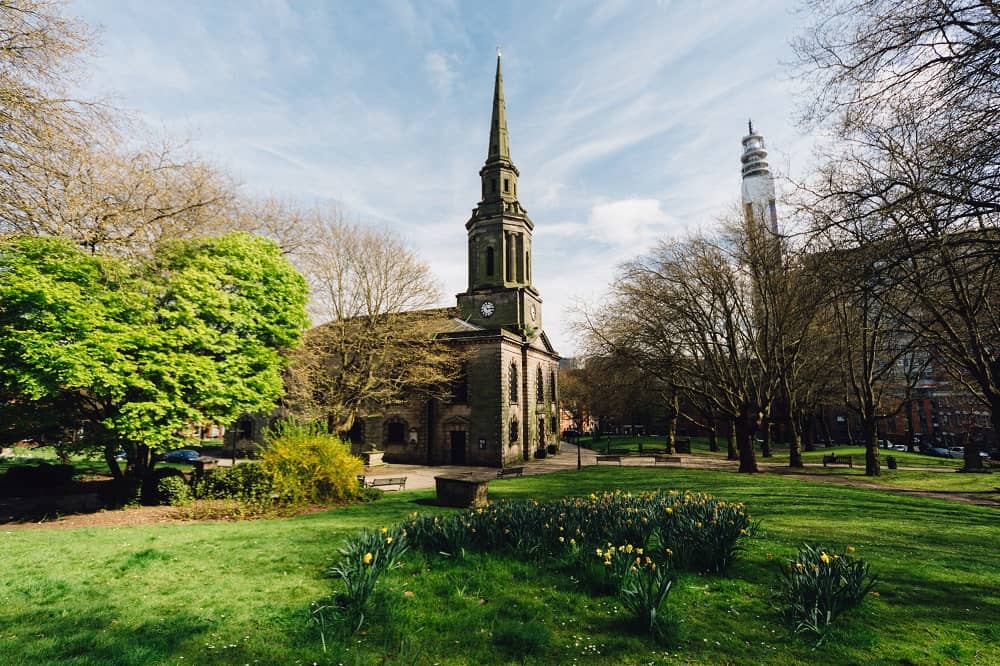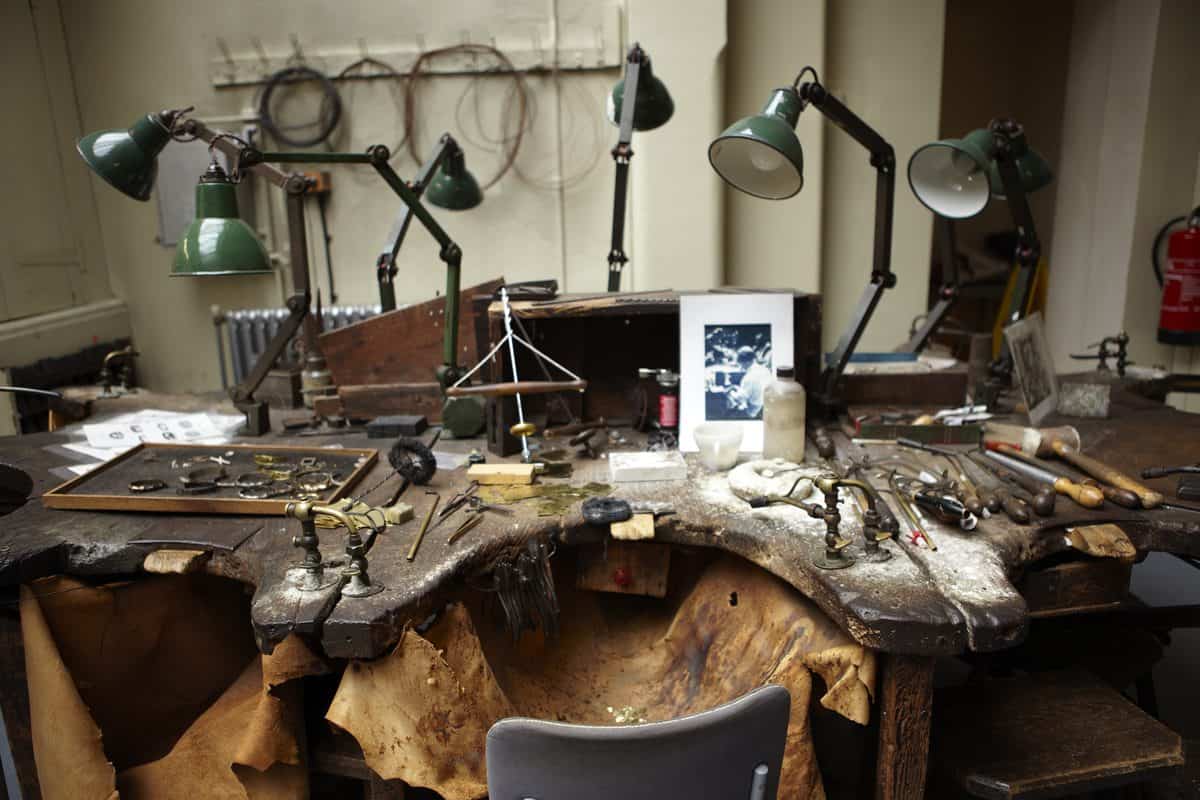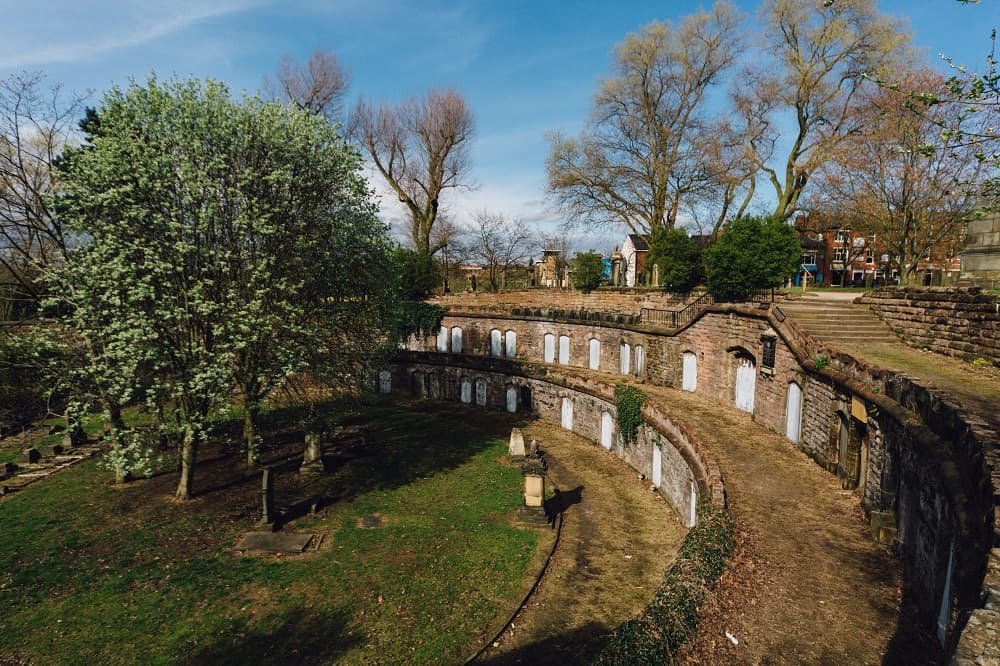Jewellery Quarter History and Heritage – Step Inside!
Reading Time: 4 minutes
Located in the north western part of Birmingham, this vibrant zone is the home to some of the UK’s finest jewellers, goldsmiths and gem merchants. It is also Europe’s largest concentration of jewellery businesses. Over the decades it has become known as the golden heart of Britain and been recognised as an anchor point of the European Route of Industrial Heritage.
Over the past decade the Quarter has experienced significant urban regeneration and now attracts a wide range of young professionals as well as many great independent bars, clubs and restaurants. Fortunately, it has retained most of its Victorian charm and remarkable heritage that makes it a must-visit destination in Birmingham. Like so many places in Britain, it’s exact origins as a ‘place’ are unclear but the first mention of a jeweller can be found in the 1553 survey of Birmingham. A certain Roger Pemberton was identified as a ‘goldsmith’ both working and residing in the area.
Originally an Anglo-Saxon settlement, some historians believe it was located at Hockley in the Jewellery quarter. It was from these simple beginnings that Britain’s second city would eventually evolve. By 1166 there was a Norman castle and a charter for a market – already the area was becoming a business hub.

By the medieval period the town was manufacturing textiles, leather goods, iron tools and pottery. The potential of the location was enhanced by several trade routes running through the immediate region. By the 1520s the town was the third largest in Warwickshire and was already widely recognised for the importance and quality of its metal working.
By the late 1690’s the area had over 200 forges and was producing fine swords, canes, boxes, buckles, hilts and other goods incorporating rock crystal. With the arrival of the industrial revolution and the Victorian Era the greater city quickly became known as the “City of a thousand trades” and was already becoming recognised for the quality of its toymakers who were probably the precursors of our modern Jewellers and goldsmiths.
Guilds tended to cluster together in areas for support and the Jewellery Quarter of Birmingham started to emerge. The arrival of precious metals from the Australian Gold Rush helped support the new industry, high quality 9, 12 and 15 carat gold alloys were now readily available to the craftsmen of the Quarter.
There are many fascinating and historic places to visit in the Jewellery Quarter. For people interested in the history and heritage of the area the Museum of the Jewellery Quarter is a great place to start as it is based in a wonderfully preserved jewellery workshop.

Nearby is the Pen Museum that focuses on the remarkable history and legacy of the pen trade and how it positively supported improving literacy throughout the world. For a time, the Jewellery Quarter was recognised worldwide as the finest producer of nibs, quills and “instruments for the art of writing”.
The Assay Office is the largest in Europe and the School of Jewellery is believed to be the largest in the world – naturally! What’s more, English Heritage has recognised that the area is a national treasure.
Two additional heritage locations are both fascinating and just a little macabre. The Coffin Works – home of the Newman Brothers Museum – and the Warstone Cemetery Catacombs. The Coffin Works offers an unusual look at death – particularly from a Victorian perspective through history. Visitors also have a chance to see the workshops and tools that were used to make coffins and fittings some of which were used for famous Britons such as Winston Churchill, Joseph Chamberlain and The Queen Mother. The Catacombs are mysterious and are built in two tiers. The many noxious vapours that used to be emitted in the past eventually resulted in the Birmingham Cemeteries Act which demanded that non-interred coffins must be sealed with pitch or lead.

Other history and heritage landmarks include the street clock built to commemorate Mayor of Birmingham – and Colonial Secretary – Joseph Chamberlain, St. Paul’s Gallery and Birmingham’s last surviving Georgian square. The streets are overlooked by more than two hundred listed buildings, a hundred of them being Jewellers, and are the setting for two recent novels by author Annie Murray – “The Silversmith’s Daughter” and “Sisters of Gold”. In fact, the recognised English poet, Ian McMillan, even penned a poem dedicated to the area.
Some fun history facts include:
- All the original Victorian police whistles were made by Acme in Jewellery Quarter as were the whistles that were used by the actors in the famous film Titanic starring Leonardo di Caprio and Kate Winslet.
- A local history legend has it that the Kray Twins, the infamous gangsters of the 1960’s, ended their attempt to infiltrate Birmingham when they were confronted in the Jewellery Quarter by local enforcers.
- Street artwork commemorating the hit TV series – Peaky Blinders – has started appearing in the area
- The Queen’s birthday Honour medals have been produced in the Jewellery Quarter by Toye Kenning & Spencer – a 325-year-old company.
- When the original FA Cup (The Football Association Challenge Cup) was stolen, the organisers turned to the Jewellery Quarter to make a replica from a single surviving cast. The cup was used until 1910. Other trophies made by Birmingham silversmiths include the famous Rosewater Dish Wimbledon Trophy, the 1948 Olympic Torch and the golden Lonsdale Boxing Champion Belts. The awards for the PFA and FIFA World Player of the Year were also manufactured here.
- Even though there is an abundance of history and heritage in the area, it is still a living and vibrant part of the city and still responsible for over 40% of all gold and jewel items manufactured in the UK.
